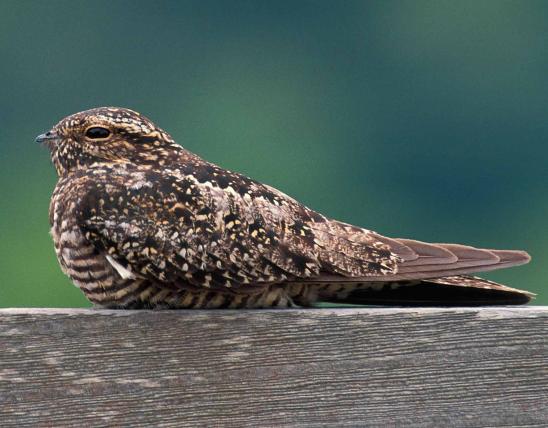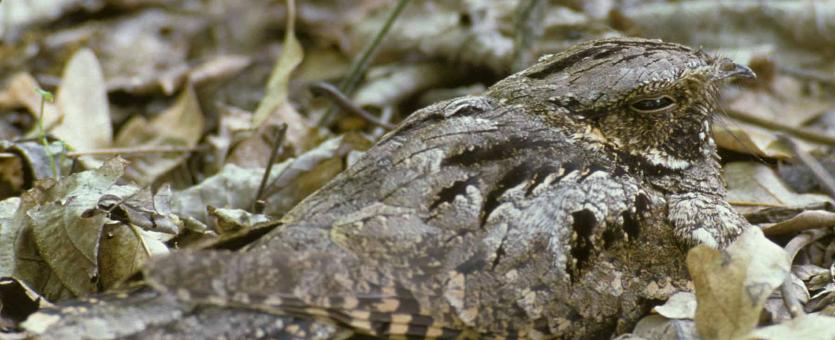
Adult whip-poor-wills have short, rounded wings and are able to turn quickly when pursuing prey. They have cryptically colored plumage with gray, brown, and black mixed in a pattern like dry leaves on a forest floor. The chin is blackish, with a white band at the lower edge in the male, with a buff band in the female. The outer three tail feathers are white near the tip in the male and buff on the corners in the female. In flight, the wings and long tail are rounded. The well-known “whip-poor-will” call may be repeated hundreds of times a night.
Similar species: Calls are the most common ways of identifying birds in this family. The common nighthawk cries sporadic loud peents. In flight, it has pointier wings with a bold white bar easily seen from below; the tail is slightly forked. Chuck-will’s-widow sings “(chuck)-will’s-widow” and is larger (12 inches long), with a bigger head, and is browner (less gray) than the whip-poor-will; males have less white on the tail; it has a yellowish, not reddish eyeshine (see below).
Length: 9¾ inches (tip of bill to tip of tail).
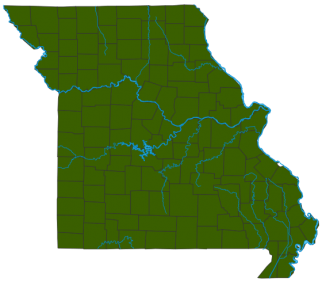
Statewide.
Habitat and Conservation
Common in forests and woodlands with open understories. Although many people hear their nighttime calls, often at close range, few ever see them because by day they crouch on the ground amid fallen leaves, where they are perfectly camouflaged. They sit absolutely still and only flush when you get quite close — then they fly off and vanish again. Try driving slowly through a forest on dark country roads in summer: Look for their reddish eyeshine in the road at the limit of your headlight beams.
Food
Whip-poor-wills forage in wooded areas on moths, grasshoppers, beetles, and other flying insects. They are most active in the evening and at dawn and may be observed as they quietly dart for insects. Whip-poor-wills are especially active on moonlit nights because they need to see their prey in order to catch it. In fact, egg-laying is timed so that the young hatch about 10 days before a full moon, allowing the parents to forage all night long to feed their hungry chicks.
Status
Common summer resident. A Missouri species of conservation concern.
Populations are decreasing in many parts of Missouri. These ground nesters cannot breed successfully where forests are grazed by livestock, especially hogs; in areas with cats and dogs; and where suburbs and farms have replaced forest. Where their nests are trampled and their young preyed upon, this species no longer breeds successfully or at best occurs only as a transient. Keep livestock and pets out of wooded areas, and ground-nesting birds will return to your area.
Life Cycle
They are here April to September, overwintering in Mexico and Central America. No nest is built; only 2 well-camouflaged eggs are laid on leaf litter on the ground. The adults incubate the eggs for about 20 days, their weight making a slight depression in the leaves at the nesting site. Hatchlings are well developed but have their eyes closed; they are able to move around at a young age, and they leave the nest within about a week of hatching. There can be 1 or 2 broods a season.
Human Connections
Whip-poor-wills’ haunting song appears in countless folktales, novels, poems, and songs. An old Ozark belief held that if this bird sat on the roof of a home and sang, a death would occur nearby within 24 hours. And yet the arrival of human livestock and pets commonly spells doom for whip-poor-will young.
Ecosystem Connections
Whip-poor-wills and other nightjars eat flying insects, helping to keep their numbers in check. They and their eggs and young, although well camouflaged on the ground, are eaten by many natural predators such as raccoons, skunks, and snakes.
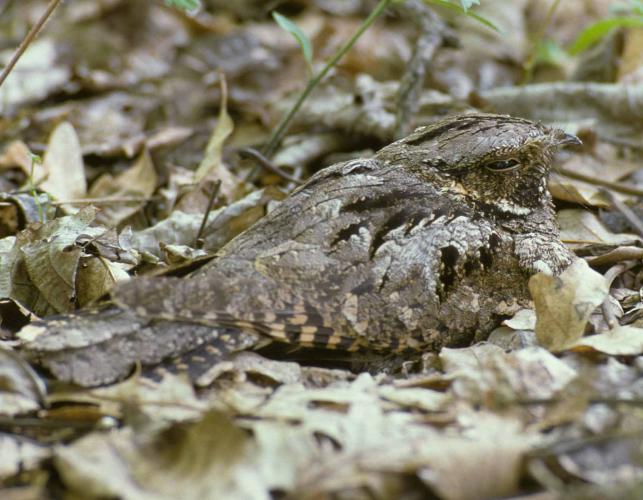
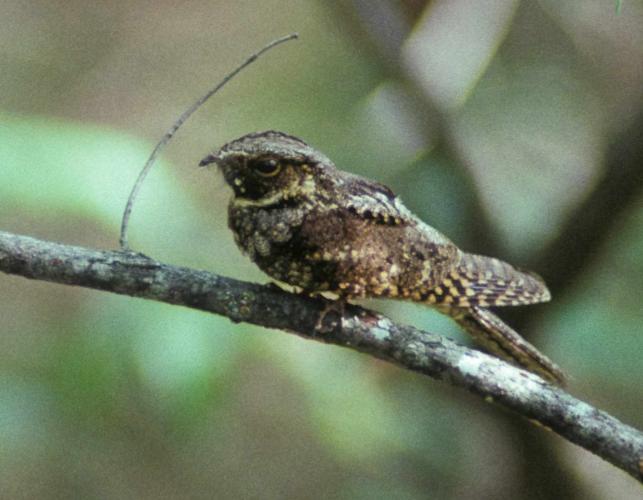
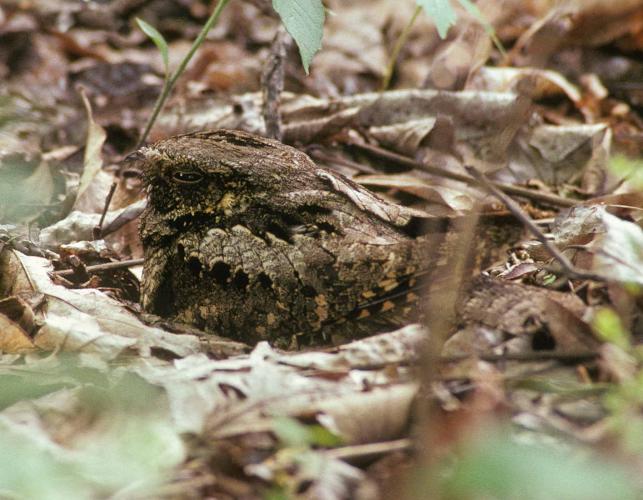
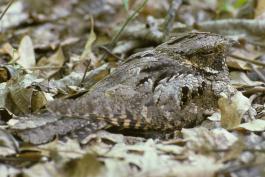
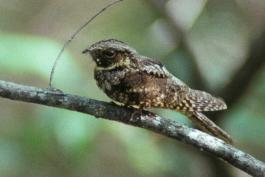

About 350 species of birds are likely to be seen in Missouri, though nearly 400 have been recorded within our borders. Most people know a bird when they see one — it has feathers, wings, and a bill. Birds are warm-blooded, and most species can fly. Many migrate hundreds or thousands of miles. Birds lay hard-shelled eggs (often in a nest), and the parents care for the young. Many communicate with songs and calls.






















